Technically explained, contact is the connection between the horse’s mouth and the rider’s hand. However, riding is much more than technicalities as we deal with another living entity.
Riding requires continuous communication with the horse, and for that to occur we have to find a common language with him. Contact is an essential piece of this language, and it goes without saying that respect and confidence are essential elements of good contact. In equitation—the art and practice of horsemanship and riding—everything depends on the quality of the contact: the horse’s balance, the changes in his frame and his straightness, and the quality of collection. Contact is also reciprocal between horse and rider: The rider can achieve good contact only when the horse feels comfortable and relaxed and moves in good natural balance.
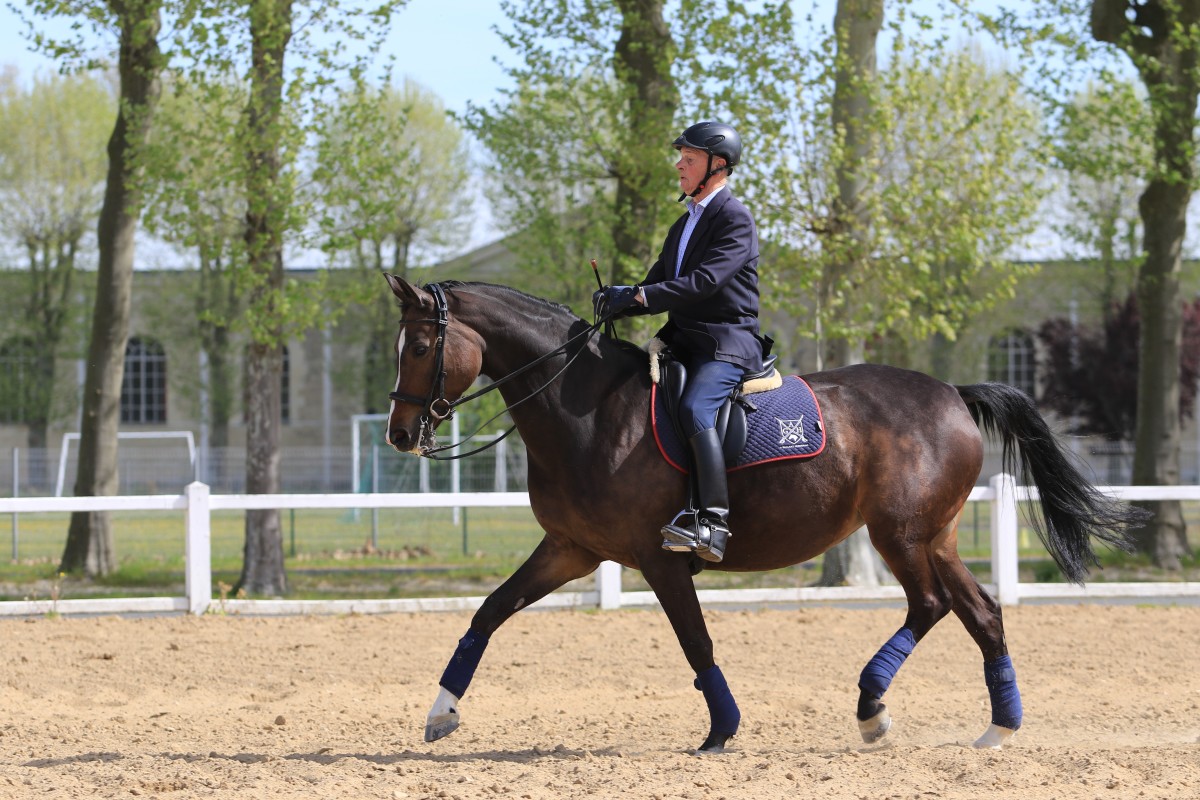
Silke Rottermann
Contact must never be forced because the horse’s mouth is extremely sensitive by nature. Instead it should be imagined to be like the connection that forms when a father takes his child’s hand to lead him across a busy street: faithful, soft, relaxed.
This kind of contact is possible only when the horse has a relaxed mouth. If this is the case, the horse “tastes the bit,” like the French say. In other words, the horse executes a slow and soft chewing motion with his tongue, which lifts the bit, resulting in slight saliva production.
Therefore, the mouth gives the rider very important information about the horse’s mental and physical state, and the quality of contact becomes the indicator of his wellbeing during work. When the horse is moving in balance and with the right contact, he expresses calmness and harmony with his rider.
Elements of Good Contact
Riders automatically think of their hands when they hear the word “contact.” But it’s important to be aware that the rider is always keeping contact with the horse through her whole body—not only through her hands, but also through her arms, shoulders, hips and down to the heels. It’s also important to remember that suppleness in the rider’s joints is indispensable for good riding. Hands are only one part of the whole picture.
Good contact also requires that the rider’s hands are not always strictly fixed above the withers, but that, to a certain degree, they follow the horse’s natural head–neck movements, which allows the rider to be continuously connected with the horse’s mouth regardless of the posture or frame.
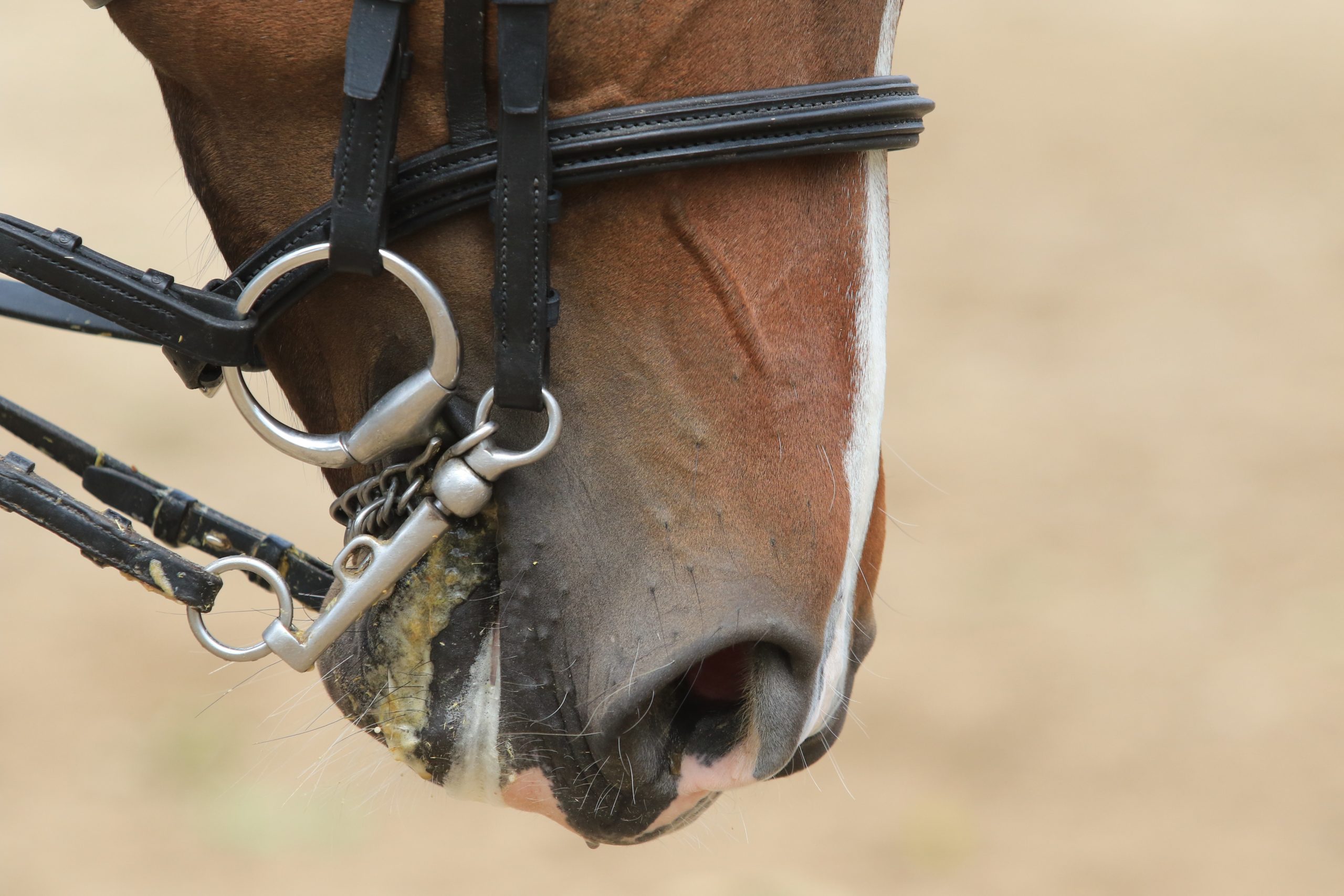
Silke Rottermann
Contact has a lot to do with the feeling of the rider, but there is one simple fundamental rule that everyone should follow: Riding with too much tension in the reins, also referred to as “riding backwards,” is wrong.
Contact is always determined by the tension of the reins, which the rider—not the horse—decides. This, in turn, depends on the rider’s chosen rein length. The right length is one decisive determinant of good contact, but it is also something that is individual to each horse and has to be sensed by the rider when she softly picks up the reins.
The rein length must not prevent the horse from using his neck. However, the rider must take care that the reins are not too long because the connection then becomes imprecise, and the rider might be tempted to pull backward to feel the mouth. Long or loose reins do not automatically produce a soft connection. Good contact is steady, but, from the beginning, as soft and light as possible.
The better in balance a horse becomes through an increase of collection, the more he will carry himself, and as a result, the contact will become so light that you eventually can ride with just the so-called “weight of the reins.”
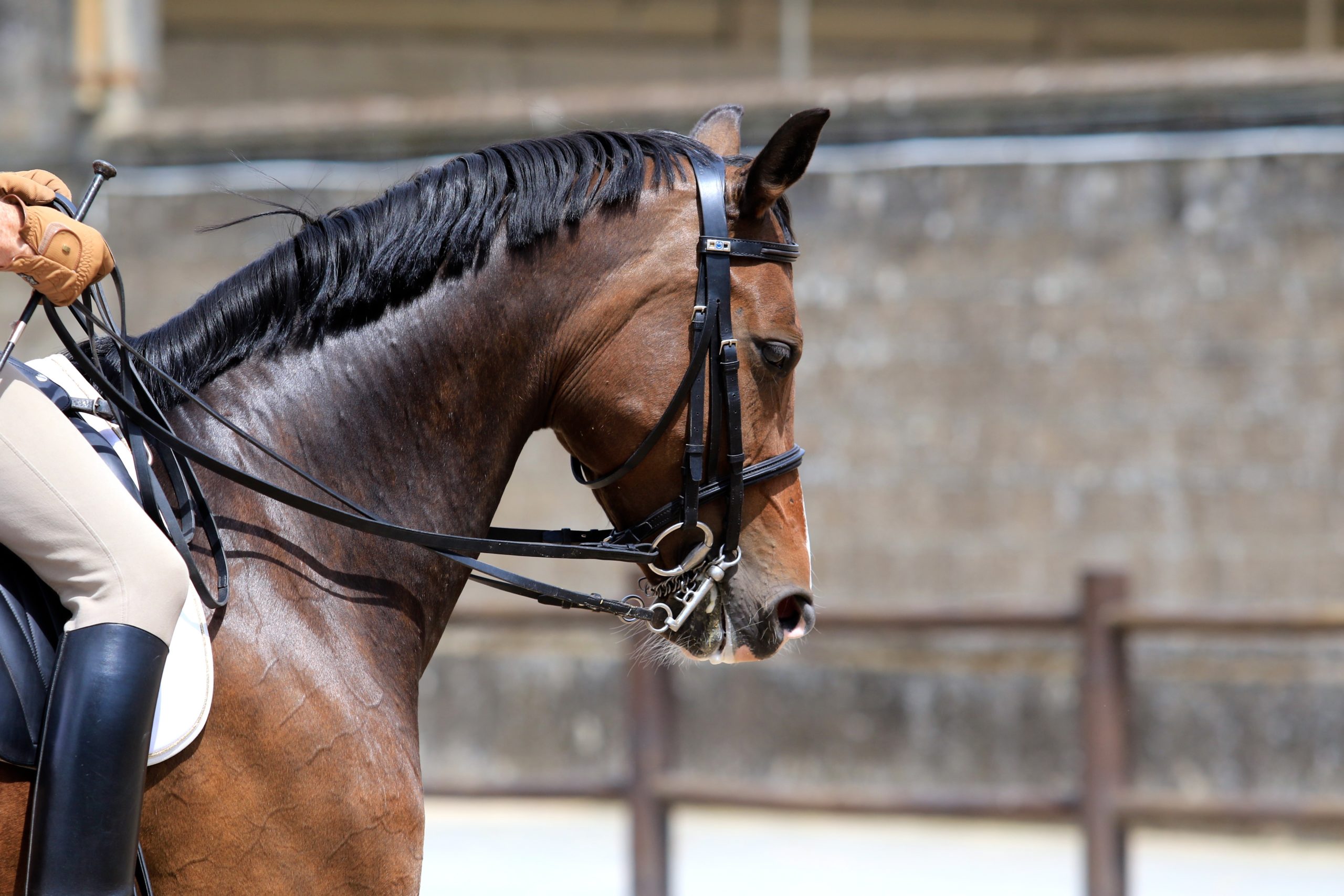
Silke Rottermann
Finally, the correctly fitted tack must not be neglected because ill-fitting equipment can cause a lot of trouble. Regarding contact, the choice and correct fitting of the bit and noseband are of utter importance. If we really believe riding is a conversation with the horse, we will not proverbially “shut the horse up” with a cranked noseband. The combination of the right exercises, the sensitive rider’s hand and an attitude in which the rider absolutely considers the horse as a partner makes closing the horse’s mouth with the help of tools not only dispensable, but despicable. Only a relaxed mouth leads to good contact.
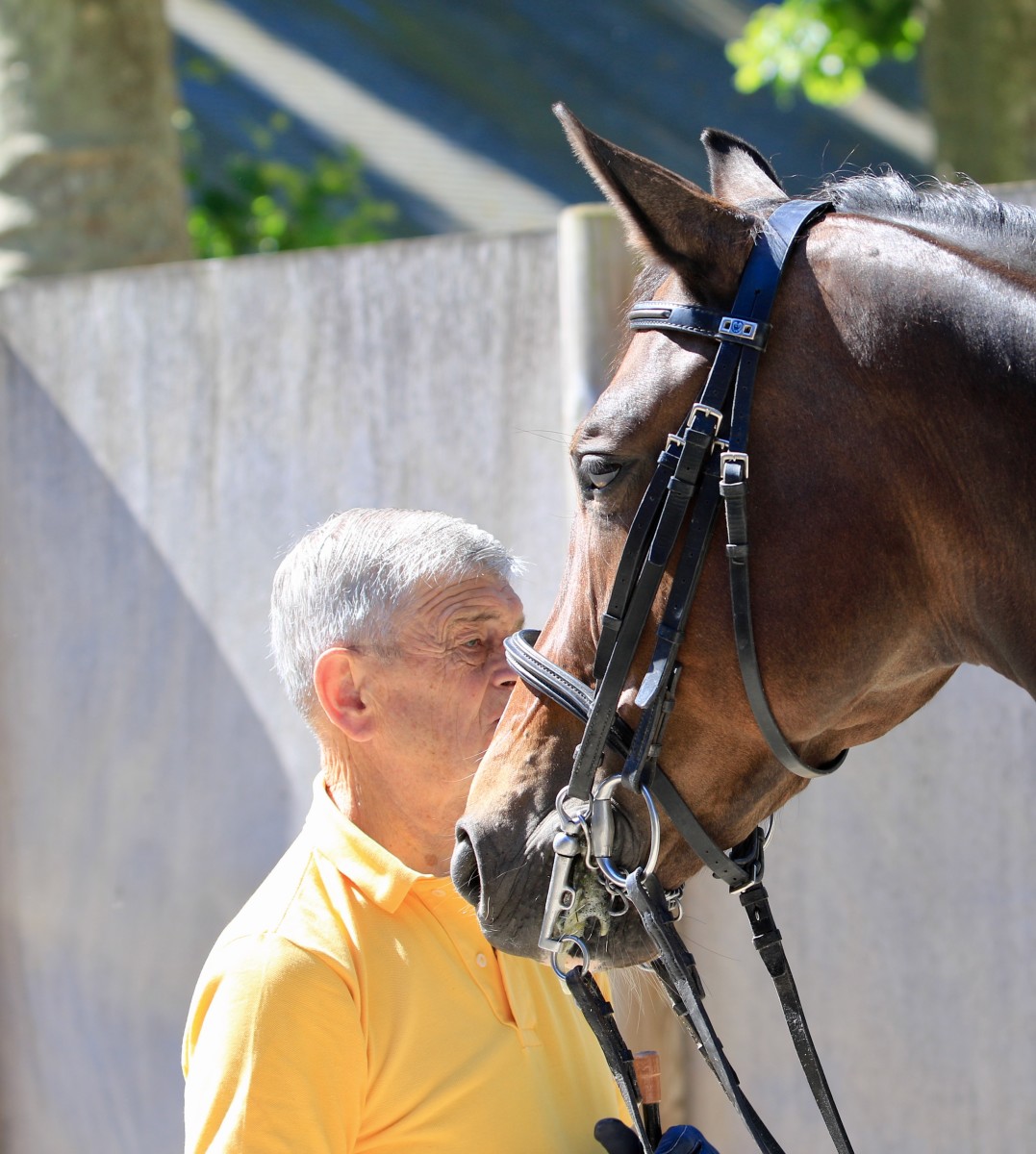
Silke Rottermann
Why Walk Exercises?
The aim of all exercises is to achieve contact in which the horse is elevated and seeks the rider’s hand with a round neck and the poll as the highest point as soon as the hands are positioned quietly above the withers. The quality of this contact has to be even, elastic and soft on both reins.
To achieve it, the walk plays an indispensable role in the French equestrian tradition to which I belong because this gait does not pose a balance problem for the rider. The rider can sit more quietly, deeply and smoothly in walk, in contrast to trot and canter, and therefore can more easily coordinate her movements which results in more precise aids.
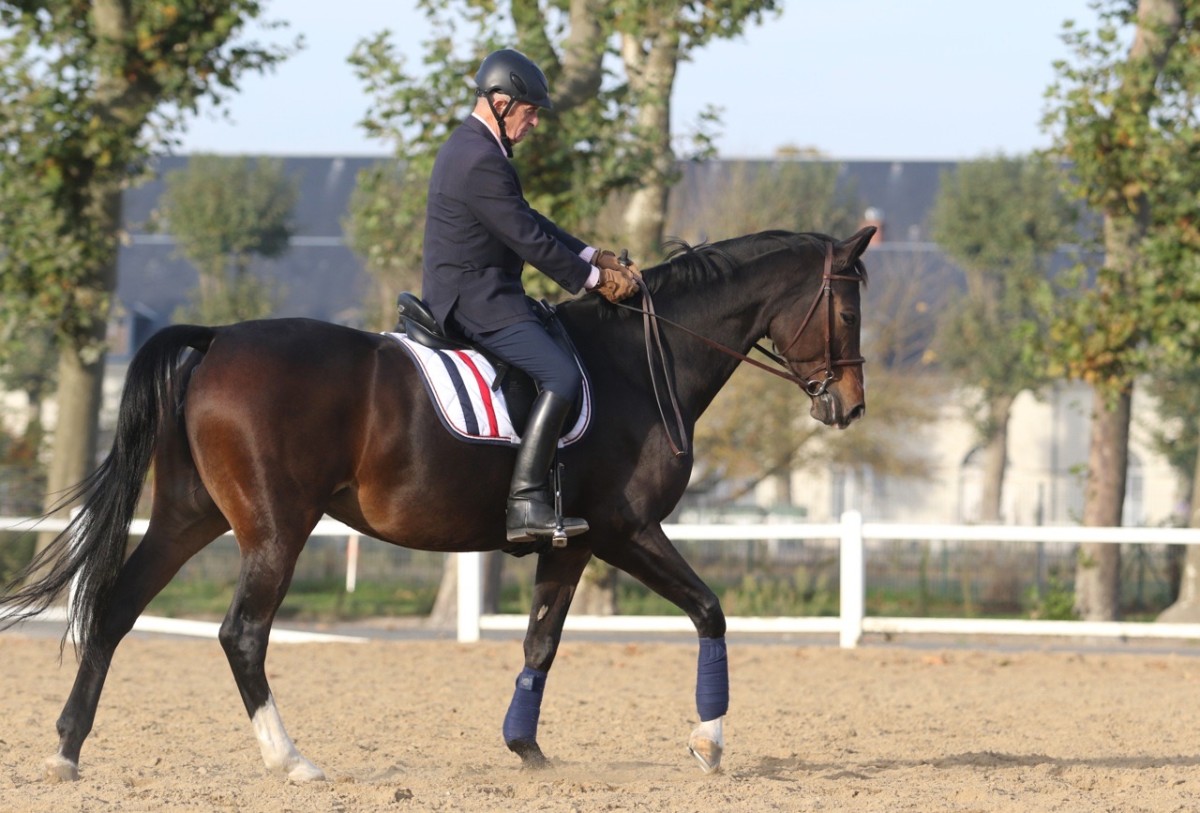
Silke Rottermann
This slow gait is also a valid indicator for the quality of contact because mistakes in the contact are shown the clearest here: A hard hand and bad contact cause stiffness in the horse’s back, and as a result the walk becomes irregular and can develop a pacing quality, meaning that the four-beat rhythm becomes increasingly disturbed and the walk becomes irregular or “lateral.” These problems must not be ignored as they influence the horse’s whole way of going and should immediately be addressed as soon as they appear.
To develop correct contact, the horse must be able to demonstrate lateral flexion. Lateral flexion also helps to promote good contact because it supples the muscles of the horse’s neck. When we speak of lateral flexion, we mean a slight flexion of the horse’s head to the left or right but without significantly including the neck as well and without the horse tilting his head. The flexion is just enough to see the horse’s eye shimmer on the according side. That is much easier for him to achieve and maintain in this slow gait. Exercises that test and encourage lateral flexion and help to make the poll more supple facilitate good contact.
Finally, the walk is the ideal gait to teach the horse new things. If the contact in trot and canter is not of quality, the rider needs to go back to walk. The walk might be a slow gait, but it definitely must not be lazy. During all exercises the horse has to be active in two senses: Physically—by walking diligently, characterized by the active steps of the horse—and mentally, by reacting to the slightest indication of the rider. Following are three exercises to help find quality contact.
Exercise 1: Lateral Flexion on the Circle
Francois Robichon de la Guérinière (1688-1751)—considered the “father of classical equitation”—mentioned in his masterpiece Ecole de Cavalerie that training on the circle encourages the horse to yield.
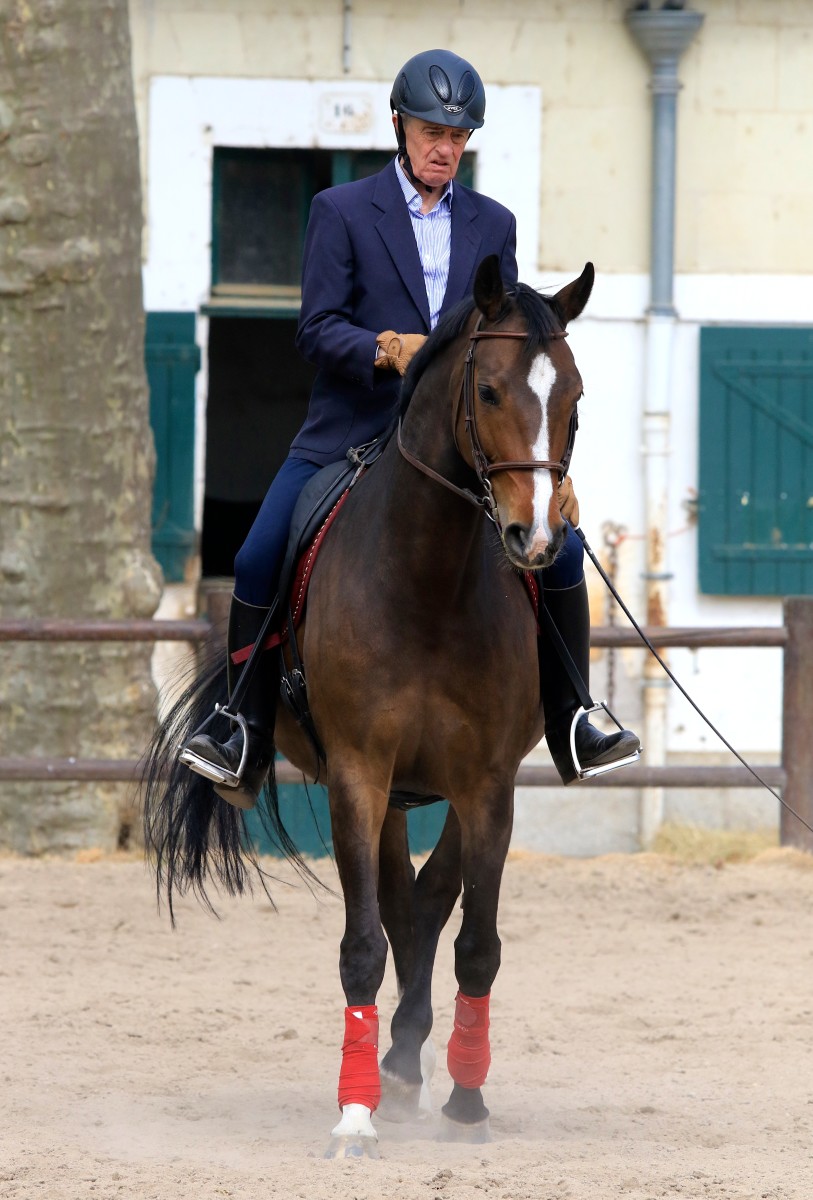
Silke Rottermann
Hence, lateral flexion is not only indispensable for correct riding on bending lines or in lateral movements, but it also plays an important role in bringing the horse on the bit in a gentle way. It encourages the horse to relax his mouth and to yield in his lower jaw, allowing for the characteristic chewing motion.
Through exercises that aim for correct lateral flexion, the horse is motivated to take the bit and go into an even contact. Lateral movements are well suited for this aim and additionally make the horse more supple.
The exercise I describe next should be executed a few times in both directions at the beginning of a training session because it relaxes the horse’s mouth and mobilizes his hindquarters at the same time.
1. Gently pick up the reins, taking care that the horse is in sufficient elevation according to his training level and is walking diligently, characterized by the active steps of the horse. For this exercise, the horse should be as elevated as possible, but only as much as it fits his level of training and conformation. (For more information about this, see Kim Herslow’s article “Find the Right Dressage Frame” on PracticalHorsemanMag.com.)
2. Next, ride a circle, about 10 meters in diameter, making your inside rein slightly shorter than the outside one to promote correct bend, and remember to use your outside aids. Using your outside aids helps you to both maintain correct bend and prevent overbending, as correct bend or flexion involves all of your aids acting in a complementary way. As you do this, use both of your legs to keep your horse moving actively forward.
3. Push the horse’s quarters outside the circle with your inside leg to get a slight crossing of the horse’s inside leg over the outside one. Because horses have the natural tendency to yield to the inside, your horse will soon give by yielding in the mouth as a reaction to the lateral flexion you asked on the circle. (See photo at left.) Take care to allow that inside yielding by slightly giving on the outside rein. The horse is not allowed to tilt his head or flex too much to the inside, which you prevent with the outside rein.
4. As soon as your horse yields to the flexion by softening on the reins, allow him to stretch progressively forward and downward. Be sure the horse is following your hand and do not allow him to pull the reins out of your hand, which some horses with a bad past tend to do. The stretching is not only beneficial for the horse in terms of keeping him supple and not tiring his muscles, but it also is a good test to see if he accepts the contact and has faith in your hands. A correctly schooled horse will show the tendency to go forward and down with his head and a round neck as soon as we stop acting with the hands.
Exercise 2: Transitions Within Walk
This exercise is helpful for checking the quality of contact because the horse has to follow the rider’s hand with trust and accept the bit. It also looks easy at first, but it requires a lot from the rider as he must pay great attention not to disturb the horse’s walk rhythm.
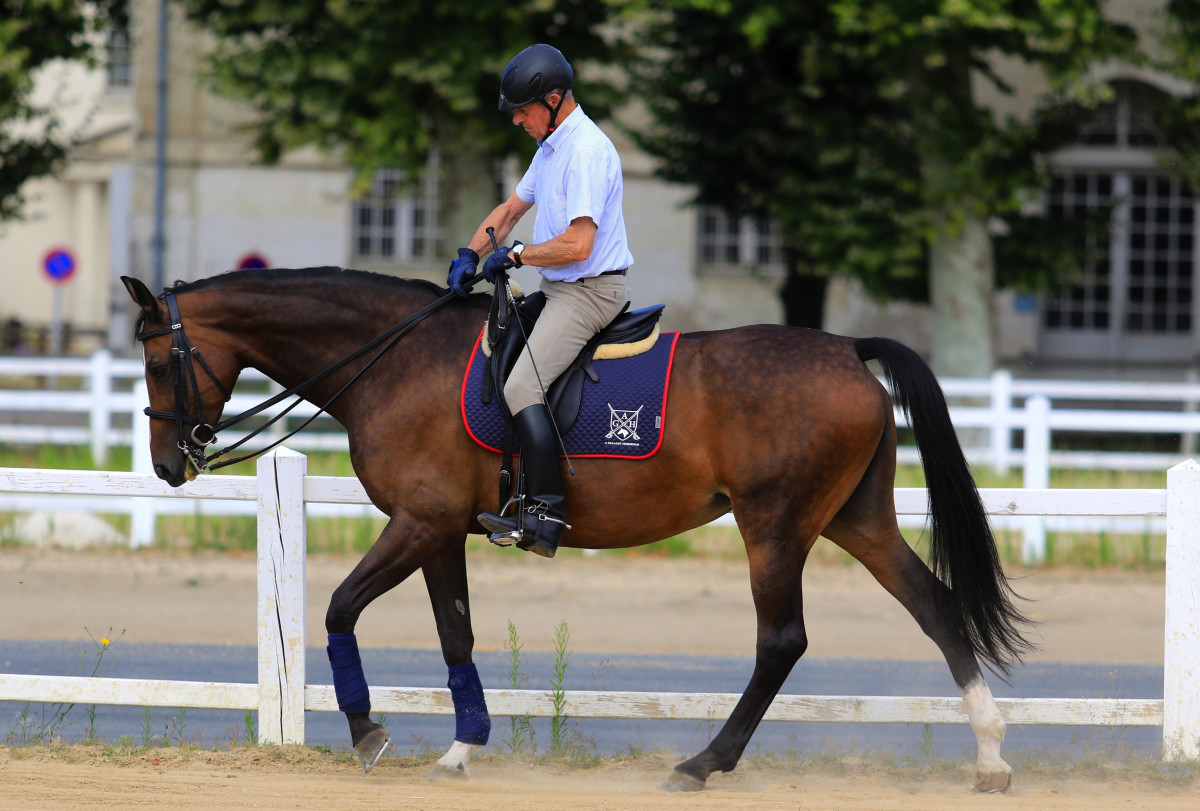
Silke Rottermann
1. On a straight line, begin with a diligent collected walk, with the horse elevated and in soft contact.
2. From there, ask the horse to lengthen his steps into an extended walk by using your legs to ask for increased activity and then by progressively moving your hands forward and down, releasing the reins in a way that there is always contact with the horse’s mouth. You might need to lengthen your reins slightly, but most of the time, moving your hands forward and downward is enough.
3. To not disturb the free, relaxed marching of the horse, follow his movement with your entire body—your hands, arms, shoulders and down to your hips. Ideally you want to feel the rhythm in which the horse’s back moves and align your own body in accordance with that rhythm. You are not allowed to be faster than the horse.
4. Next, shorten the horse’s stride into a collected walk (see photo at right) by progressively shortening the reins but maintaining your horse’s activity so that he takes shorter, but loftier steps. For as much as your horse lengthens, he must be able to shorten, as well. The picking up and shortening of the reins needs to be done in a soft way to get back to the collected walk. To get a true collected walk it is essential to maintain activity in the horse’s steps.
5. As a result, the horse shortens his steps and walks more loftily while softly chewing the bit.
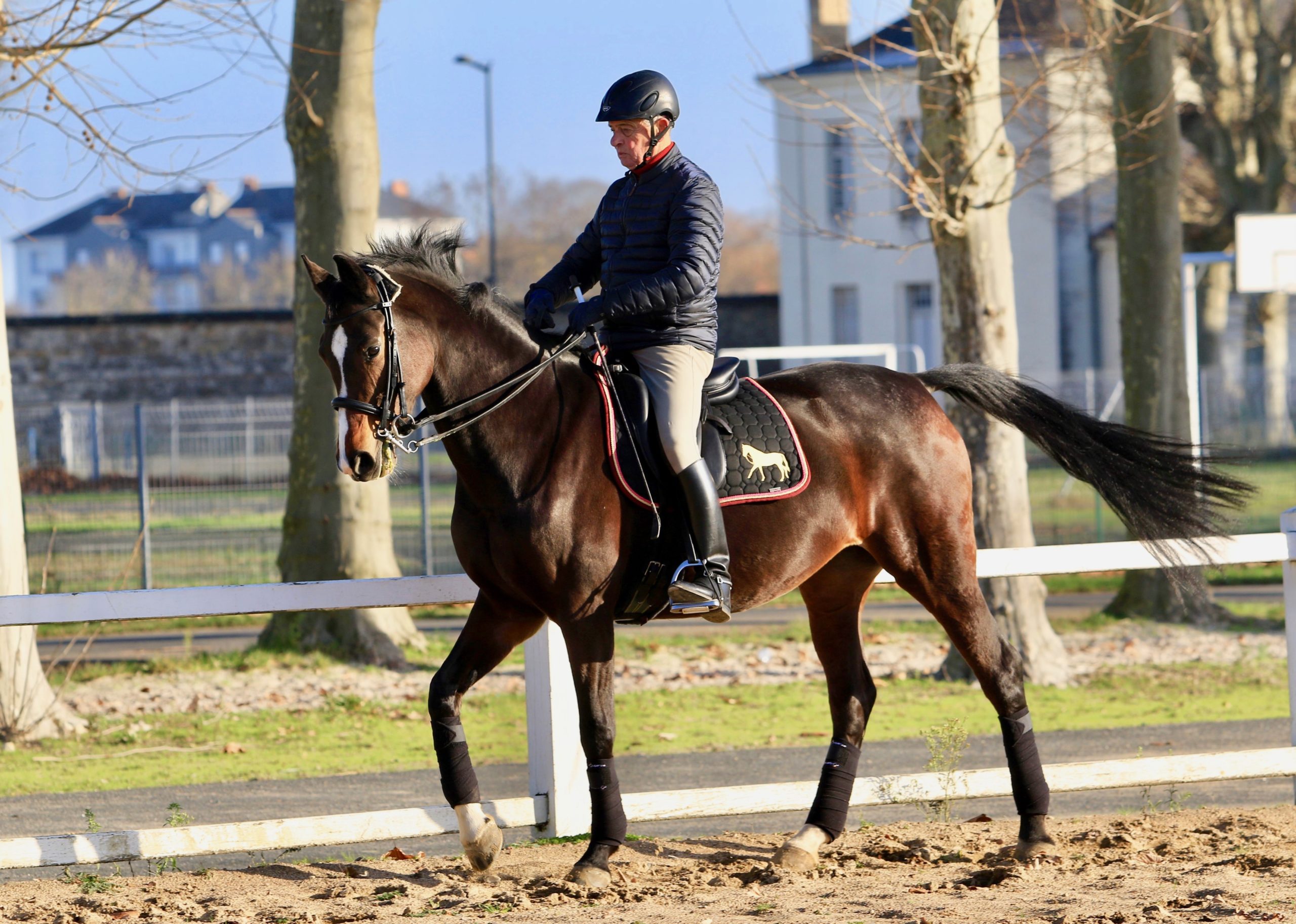
Silke Rottermann
If you regularly practice these transitions within walk, your horse will not only show more fluid transitions, but he will lengthen his steps as soon as you open his neck. To open the neck, you can move your hands forward and down and lengthen your reins if necessary to allow your horse to lengthen his outline.
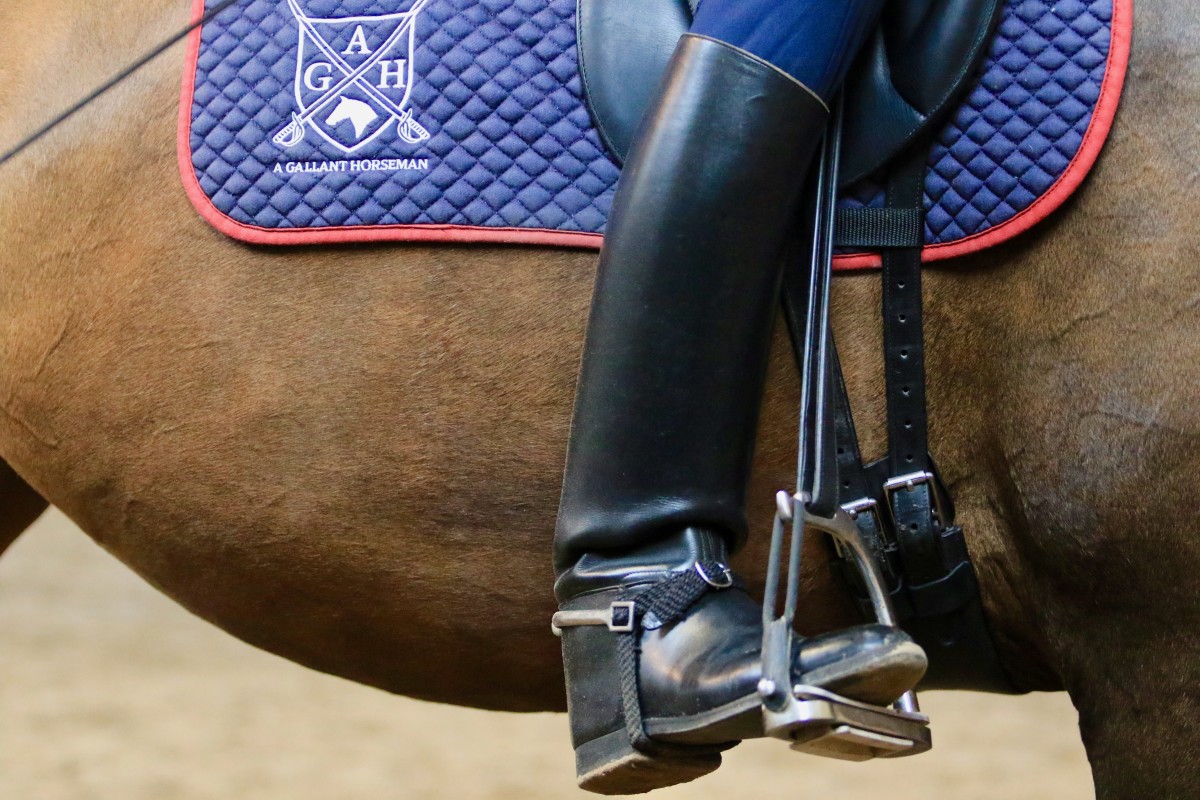
Silke Rottermann
Here’s an easy rule that may help you to master the exercise and control the length of the horse’s neck: The length of the horse’s steps determines the length of his neck!
Variation: Execute these transitions also on big circles with the horse slightly bent.
Exercise 3: “La Foule”
“La Foule” is the name of an old exercise from France in which the horse executes a succession of different lateral movements in walk and follows the rider’s hand in a soft way each time. This exercise is for a more advanced horse and rider who can smoothly execute lateral movements, including leg yield, travers (haunches-in) and half-pass, at the walk.
While this exercise is very beneficial, the rider must respect the horse’s individual limits in the lateral movements. The horse must always stay active and willing to step forward. It’s better to lessen the angle of the lateral movements and to ask for fewer steps than to make any compromises regarding the quality of execution.
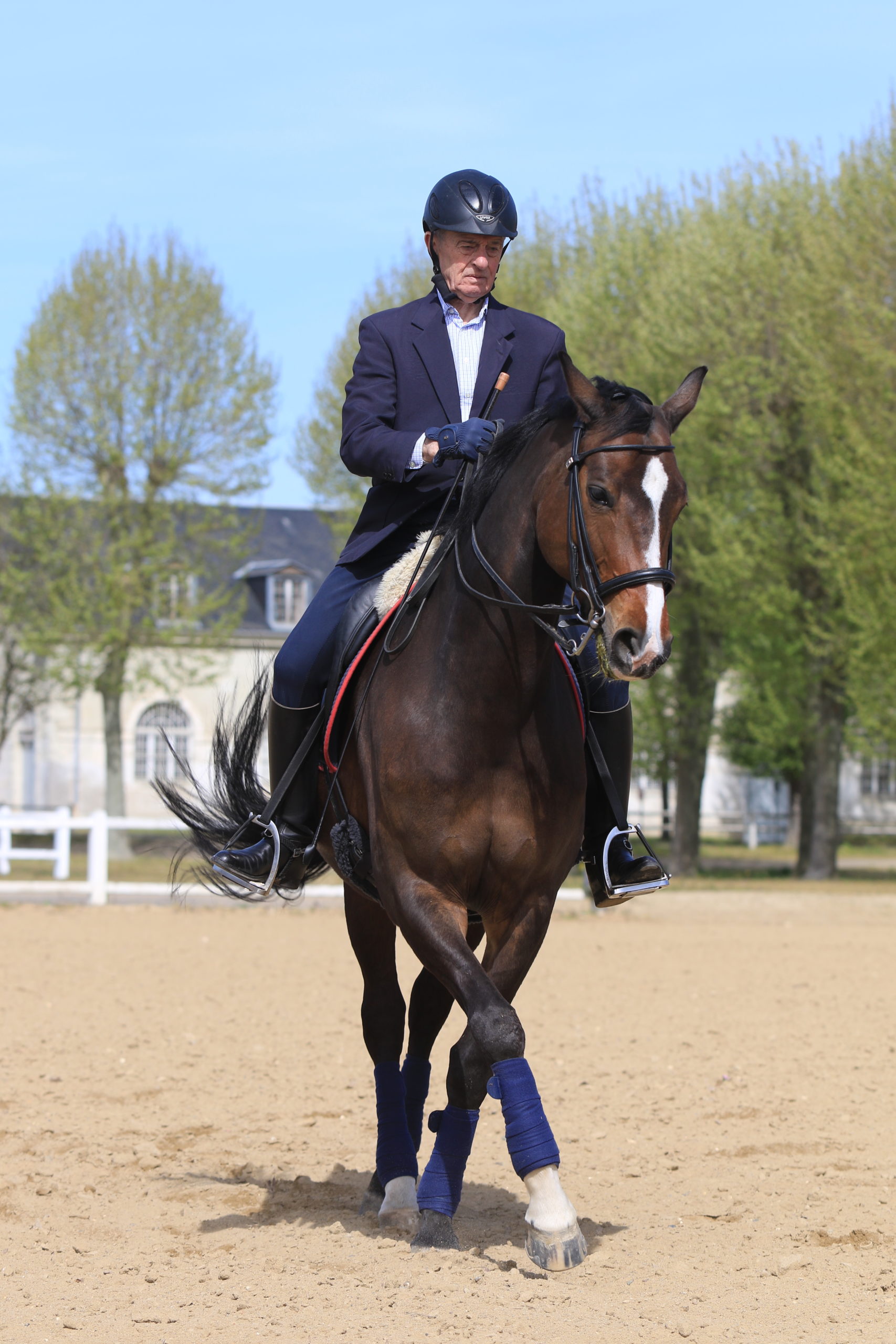
Silke Rottermann
1. Begin going to the right on a 10-meter circle.
2. Ride a shoulder-in about the length of the first half of the circle, then change into travers for the second half.
3. Subsequently, stretch the horse forward and downward along the circle line before quietly picking up the reins again. Complete the circle and continue onto the rail.
4. Execute a leg-yield right across the diagonal until you come to the long side of the arena, so now you are traveling to the left.
5. After passing the corners of the short side, prepare a walk half-pass to the left and execute it across the diagonal until you are back to going right on the long side of the arena.
6. Change into travers there and …
7. Stretch the horse forward and downward.
8. Give your horse a break and then execute this succession starting from the left.
Good contact is not only the most important topic of equitation for the reasons I mentioned here earlier, it is also an infallible indicator of the horse’s well-being while being ridden. A horse who moves in the right frame—which is a result of the good contact, balance and diligence—is one who expresses calmness and harmony with his rider.
Sidebar: When to Yield
Yielding, or giving, is an essential double act of horse and rider to achieve good contact.
The rider must yield with her hand in exactly the right moment—when the horse yields—which requires a lot of feel and experience. To precisely catch this moment does not come overnight, but every rider has to make herself aware how important it is and must try sensing the moment when the horse yields and takes the contact.
If she too often fails to yield or even deliberately ignores it in order to get the horse’s head down quickly, not only she does take the wrong approach and gets the wrong contact, but she damages the horse’s trust in her hands and prevents the contact from being as soft as it must be.
An experienced rider anticipates this moment in which his horse will yield and yields by opening her fingers just a moment before the horse does.
This is the ideal and surely is not possible for all riders, but we should at least yield in the moment the horse does. The less-experienced rider won’t even be able to achieve this, but she should make efforts to sense the horse’s mouth so that she is able to yield just shortly after the horse does.
About Christian Carde

Christian Carde was born into a horse-loving family in Bordeaux, France, and in his long equestrian career has served dressage competition from all angles. After graduating from the renowned St. Cyr Military Academy, he joined the prestigious Cadre Noir de Saumur in 1965.
Carde competed in jumping and eventing to the highest national levels before he turned to dressage as the discipline in which he celebrated his biggest success. With the Budyonny gelding Solitaire, Carde was a French team member from 1977 to 1981, became French dressage champion in 1979 and was on the French team that placed second at the annual CHIO Aachen the same year.
After he retired from riding as an active competitor, he was French national team coach in dressage from 1985 to 1989. Two years later he returned to the Cadre Noir as their head rider (écuyer en chef) until his official retirement in 1999 after which Carde served as an FEI “I” judge on several occasions. Having been an active clinician in Europe and North America for more than 15 years, Carde now spends his retirement in Saumur, France, where he trains his Oldenburg mare Milady, who is pictured in this article.
This article originally appeared in the Winter 2020 issue.










